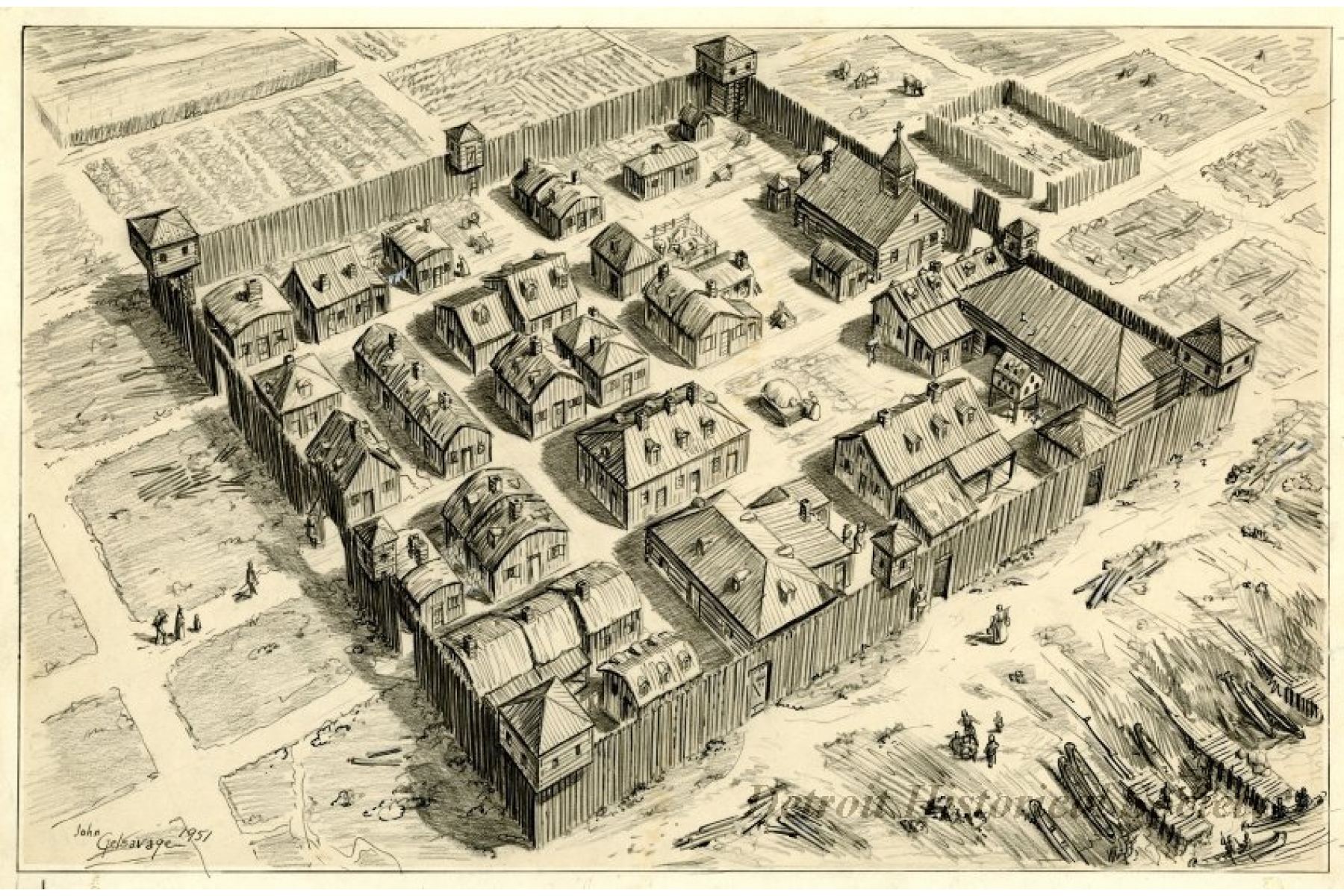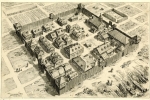New on Display: Fort Lernoult Flagpole Base
Origins: Life Where the River Bends is our newly refurbished exhibition on Detroit's early history, featuring new interactives, experiences and artifacts. One such artifact is a relatively unassuming wooden post. However, this pillar is a remnant of Detroit’s second fort: known as Fort Lernoult, Fort Detroit and Fort Shelby. It served as the base of the fort’s flagpole, which would hoist alternating British and American flags.
A plaque affixed to its side tells this artifact’s story:
A Relic of the Revolution of 1776
The ground end of the Flag Staff erected in Fort Lernoult, afterwards Fort Shelby. Constructed by the British Government during the Revolutionary War in 1778 from which in 1796 the first flag bearing the Stars and Stripes that ever floated in Michigan, was given to the breeze. It was unearthed a short time since from the site of the Fort and secured by Ellory J. Garfield Esq. By Whom it was presented, for preservation in the Public Library Building. A.D. 1877. (and later given to the Detroit Historical Society)
Detroit's Forts
The first fort constructed at Detroit was Fort Pontchartrain, built by the contingent led by French entrepreneur Antoine de la Mothe Cadillac. The town fell under British control in 1760, as part of the Seven Years’ War. During the American Revolution, British leadership at Detroit determined stronger fortifications were needed. Thus, Fort Lernoult, named after Commander Richard Lernoult, was constructed on elevated land just north of the town.
Though the American Revolution was resolved in 1783, it wasn’t until 1796 that Detroit officially came under American control, and the fort became known as Fort Detroit. Following the War of 1812, which saw Detroit captured by the British and later recovered, the fort’s name was changed to Fort Shelby, after Governor Isaac Shelby of Kentucky, who assisted in regaining Detroit.For reference, the fort’s center point was, appropriately, at the intersection of current-day Fort and Shelby streets. After 1813, Fort Shelby slowly fell into a state of disrepair, and was given to the City of Detroit in 1826, which dismantled the fort the following year.
Fort Wayne, Detroit’s third and still-existing fort, is named after General “Mad” Anthony Wayne, who led American forces to victory at the Battle of Fallen Timbers in 1796. At the closest point between the American and Canadian shores of the Detroit River, Fort Wayne was constructed through the 1840s. Though it never saw any fighting, it served as a military site through the Vietnam War.
Newly Refreshed Exhibit
The flagpole base is on display in the Detroit Historical Museum’s newly renovated exhibit, Origins: Life Where the River Bends. The exhibit chronicles the history of this region and its people from the area’s Native Ancestors through the opening of the twentieth century. The Fort Lernoult flagpole base helps tell a part of Detroit’s multi-national military history, but guests will also learn about heavy industry, bartering and the role of the Detroit River. The river has been a driving force in Detroit’s history, and that importance is recognized through the exhibit’s title bearing a translation of the Anishinaabemowin word for Detroit:Waawiiyaataanong, meaning “where the river bends” in English.
Guests to the exhibit will be able to explore the city's foundational stories through fantastic interactive elements, including a narrated map of Great Lakes explorers’ routes and video stories featuring many characters from Detroit history. Also included are opportunities for guests to take deeper dives into topics with interactive tablets with features including stories of some of the families who have immigrated to Detroit, artifacts from Native populations and numerous primary documents.





